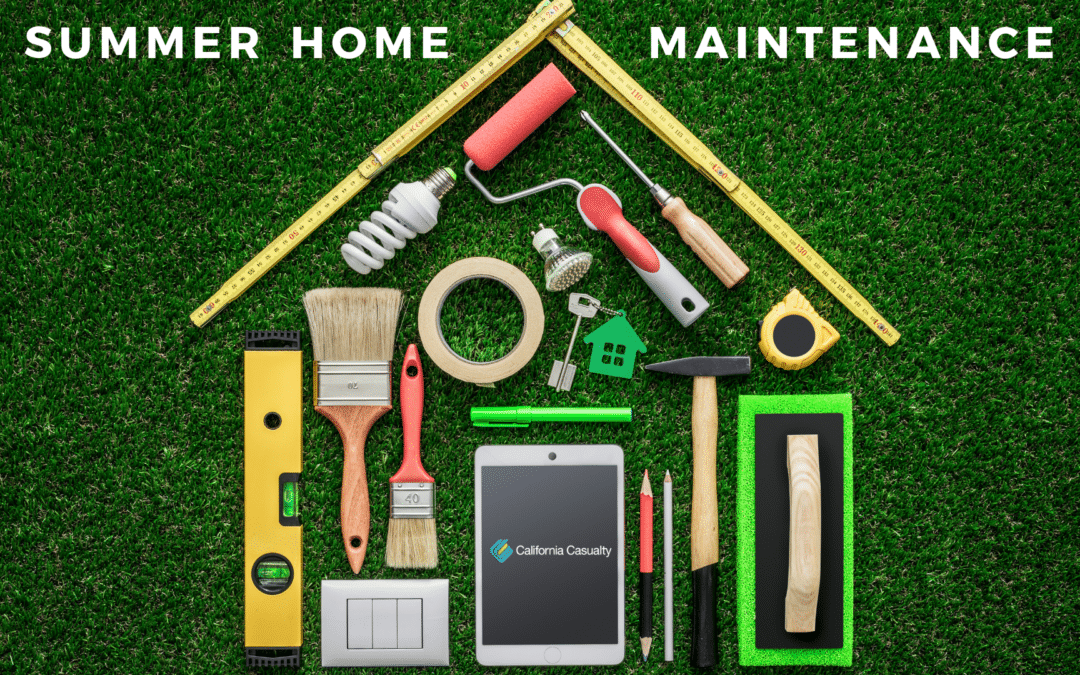
by California Casualty | Homeowners Insurance Info |
From pulling weeds to cleaning floors, it seems like house work never ends, but it’s a lot easier to tackle before the change of seasons. The warmth of summer is a good time to do maintenance that will prevent damage, prepare your home for winter, and add long-lasting value.
Here are some important mid-summer home maintenance tips:
- Do an energy audit and start fixing insulation and cracks
- Insulate hot water pipes
- Clean patio furniture
- Scrub your concrete
- Inspect and reseal decks
- Patch concrete and asphalt cracks
- Prune or remove problem trees and shrubs
- Clean exhaust fans
- Fix the fence
- Make your landscaping “critter proof” (deer, rabbits and other animals can cause thousands of dollars of damage to your plants and trees)
Doing regular maintenance can not only protect your home, but it can enhance the value of your largest investment. Most realtors and home repair experts say simple projects can add thousands of dollars to your home’s worth. Here are some tips that give the best payback:
- Clean and reduce the clutter around your home
- Spruce up your yard
- Repaint the interior and exterior
- Upgrade your lighting and light switches
- Add wood trim
Don’t forget another vital piece to preserving your home and all the things that come with it; insurance. Now is the time to get a home insurance update and policy review to make sure your precious items are fully covered at the best value. Have you made improvements that could land you big discounts? Call a California Casualty advisor today for a no hassle policy review at 1.800.800.9410, or visit www.calcas.com.
For more information visit:
https://bit.ly/2jMXf9c
https://bit.ly/2jK7Y4c
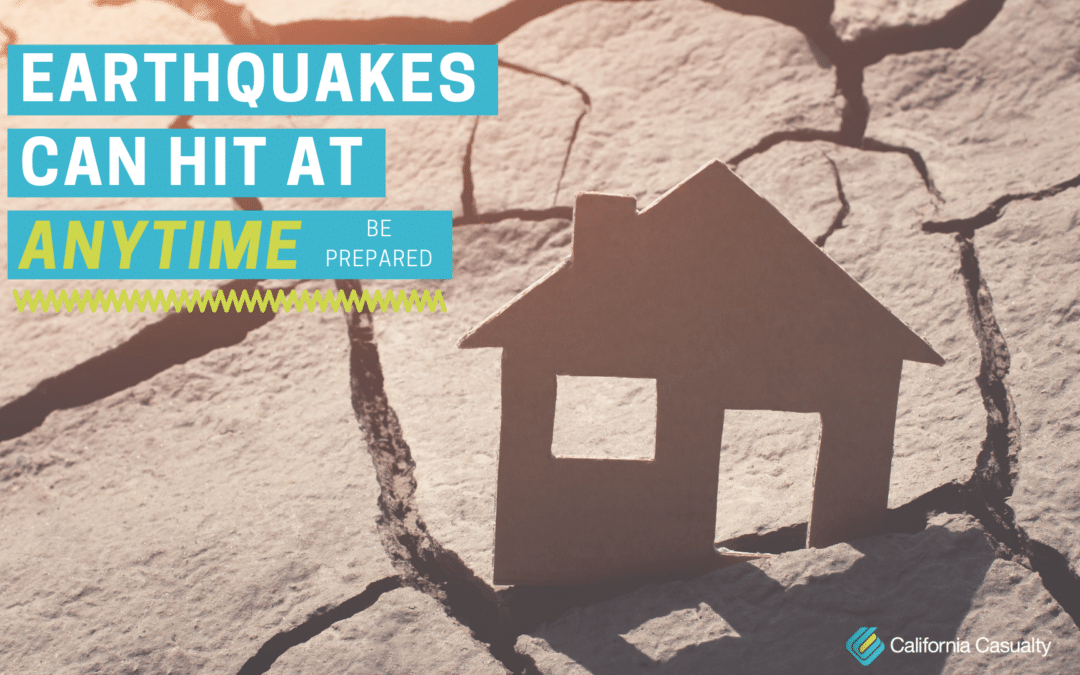
by California Casualty | Homeowners Insurance Info, Safety |
The recent large earthquakes in Southern California are a reminder to always be earthquake-ready.
Earthquakes come on suddenly, with very little warning. They can be a sharp jolt followed by the ground shaking and cracking, or waves rolling across the ground.
Earthquakes can hit anywhere at any time, and while the West Coast is considered “earthquake country,” the U.S. Geological Survey warns that earthquakes have been registered in every state in the union, with special seismic hazards for areas encompassing the western-third of the nation, and areas extending from Missouri and Illinois to most of the Eastern Seaboard.
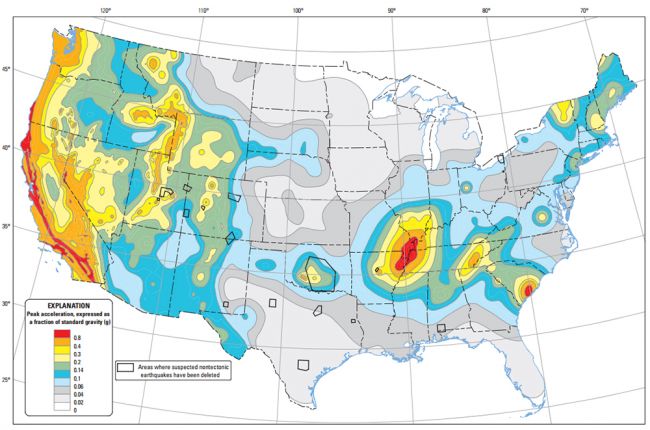
After an earthquake strikes many are often left disoriented and full of adrenaline –psyche and security shaken as much as their house. Post-quake your home or apartment may look damage-free, but there can be many hidden dangers.
After checking your family and others for injuries, here are key steps you need to take to ensure your safety:
- Check for gas and water line leaks. Know where the shutoff valves are if you smell gas or detect water leaking to prevent fires and water damage.
- Be aware of downed power lines.They can still carry a dangerous current.
- Inspect chimneys and brick areas for cracks. If cracked, they could send dangerous debris down on you or others.
- Check water heater and furnace vents. If they have become separated, it could send dangerous carbon monoxide into the home.
- Watch for electrical sparking or the smell of burning wire insulation. This could lead to a fire. Unplug any broken lights or appliances and turn off power at the main fuse box if you detect an issue.
- Clean up spilled medicines, drugs or harmful chemicals. Bleach, turpentine, hazardous garden supplies, etc.
- Don’t drink from faucets or other unprotected water sources. Wait until given the okay from your municipality or utility, because they could be contaminated.
Always Plan Ahead
Before an earthquake, or other natural disaster hits, you should always have a plan. Here are some tips to help you and your family prepare:
- Develop a family communication plan and “meet-up” location if you become separated
- Have your first aid kit fully stocked
- Prepare an emergency kit with: water, medicines, food, money, other important documents, etc.
- Have basic emergency supplies gathered all in one place: flash lights, batteries, blankets, a radio, lighters or matches, cell phone chargers, extra clothes
- Be sure to have coverage insurance.
If you have comprehensive coverage with your auto insurance, your vehicle is covered for damage from falling debris and other impacts from earthquakes.
However, earthquake damage is not covered under your homeowners or renters insurance policy, and less than 20% of Americans have purchased a policy. That means most people whose property suffers losses from a temblor will be paying out of pocket or relying on federal assistance and loans for recovery.
You can be prepared; California Casualty provides earthquake insurance as an endorsement to home owners policies in California, Illinois, Kentucky, Missouri, Oregon and Rhode Island. We also offer earthquake coverage through our partner, GeoVera Insurance Company, in California, Oregon and Washington. Learn more and get a quote at 877.652.2638 or visit www.calcas.com/earthquake-insurance.
For more information visit:
https://bit.ly/2Xz4Db6
https://bit.ly/2XVRckI
https://bit.ly/2S53H8k
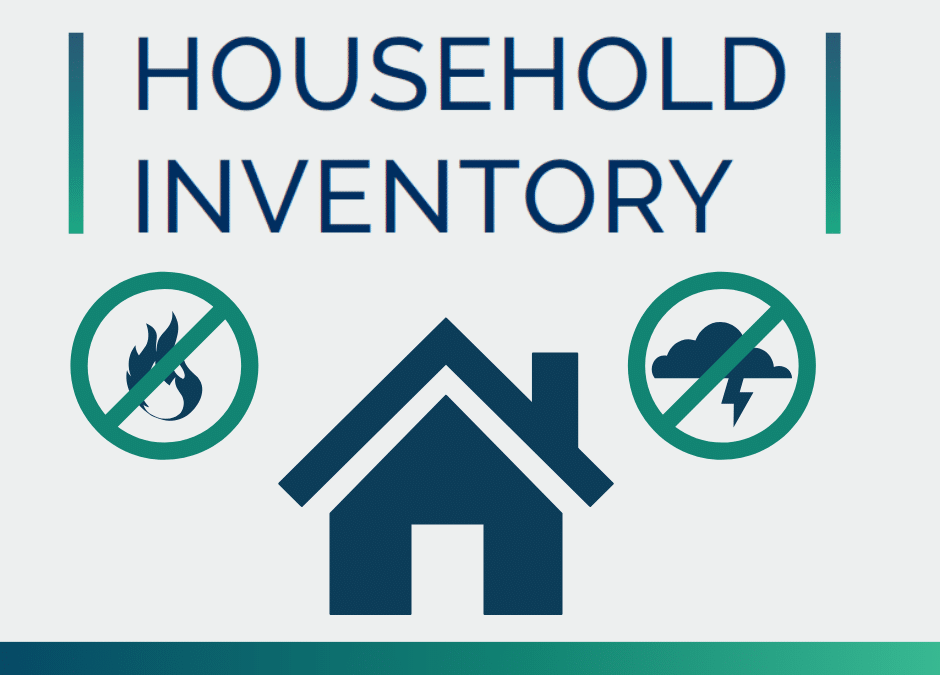
by California Casualty | Homeowners Insurance Info |
If you are one of the almost 50% of U.S. households that has never completed a home inventory there is no time like the present.
Why is a Home Inventory Important?
A Home Inventory Checklist is a list of your valuable objects in case there is a fire, destructive storm or if someone breaks in and steals your belongings. Doing a home inventory is very important because without one many people have a difficult time pinpointing or recalling everything that might have been destroyed or taken, and unfortunately that can delay claims or keep you from getting full compensation. So, before the hectic holiday season rolls around, and take the time to take inventory of your home.
Just go room by room and document:
- Electronics
- Personal care items
- Jewelry
- Art
- Kitchen items and appliances
- Furniture
- Carpeting
- Beds and linens
- Clothing
- Sports equipment
- Yard and garden tools
You can choose to write everything down or use photo/video documentation of your belongings. Don’t forget to take pictures of the exterior of your home as well (photos are best from all angels- including the landscaping and any decks or porches). Also take note of everything in the garage, attic, or basement- like holiday ornaments, lawn and yard equipment, tools, etc.
Trying to tally what needs to be replaced is not something you want to do in the event of a claim, so completing your inventory will give you some peace of mind if the worst should happen; and you can use the time to get rid of the old and make room for the new, before the craziness of the holidays.
To help you out, we’ve got a handy home inventory guide already made just for you! You can download it by clicking on the “Household Inventory” image below.
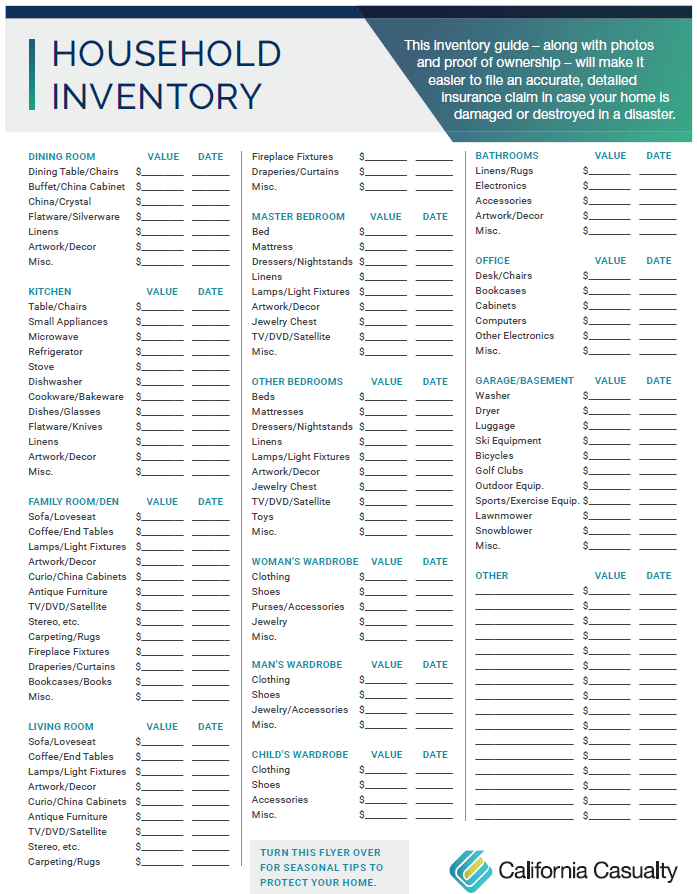

by California Casualty | Homeowners Insurance Info |
By: Nick Magoteaux
As a fire prevention officer of a fire department, I take fire prevention seriously. At the fire department, we can only inspect commercial buildings for fire codes, but you can do your own inspection to make sure your household is safe. Here are a few tips to make your house just a bit safer for yourself and firefighters.
- Do not overload electrical outlets. In commercial buildings, multi plugs are limited to ones that are only certified by Underwriters Laboratory. Multiplugs and certain surge protectors can overheat causing fires.
- If you use an extension cord, unplug it after every use. Same as the multiplugs, extension cords can overheat over time causing a fire.
- Make sure your smoke detectors have fresh batteries. Smoke detectors save lives – period! Make sure your smoke detectors are in good working order and have fresh batteries. If a fire occurs, they will save your life. The more smoke detectors you have, the safer you are, but try not to put one in or around the kitchen (in case you cook, like I do).
- Make sure your electrical panel is clear of obstructions. Firefighters have limited vision in the smoke of a house fire. We must be able to locate and shut off the power to the house to ensure our safety. Keeping the area around the electrical panel clear and clean is an absolute help. A rule in businesses is to keep three feet of clearance around the electrical panel.
- In the wintertime, if you use a space heater, make sure to give them space. A rule of thumb for space heaters is put approximately five feet of surrounding clearance. If you have an older model, you may want to consider replacing it. Older space heaters do not have the mechanism to turn off if knocked over. Also, before leaving that the room with the space heater for extended periods of time, unplug the space heater. This will prevent a fire.
These may seem like small things you can do, but they will prevent a fire or help a firefighter battle your house fire (hopefully won’t get to that point). It’s always better to err on the side of caution, then having to deal with a house fire.
 Nick Magoteaux has been in public safety for over 15 years. Nick has experience in law enforcement, dispatching, firefighting, and emergency medical service. Nick currently works for four different fire departments in Southwest Ohio, including the busiest fire department per capita in the state. Nick is also the founder and co-executive director of Brothers Helping Brothers, a fire service 501c3 non-profit that specializes in equipment grants to small and rural fire department in the US. Contact Nick at [email protected].
Nick Magoteaux has been in public safety for over 15 years. Nick has experience in law enforcement, dispatching, firefighting, and emergency medical service. Nick currently works for four different fire departments in Southwest Ohio, including the busiest fire department per capita in the state. Nick is also the founder and co-executive director of Brothers Helping Brothers, a fire service 501c3 non-profit that specializes in equipment grants to small and rural fire department in the US. Contact Nick at [email protected].

by California Casualty | Homeowners Insurance Info, Safety |
It’s time to brush off your barbecue grills, stock up on popsicles, and get a new swimsuit because summer is practically here! After a winter with too much snow and a spring with too much rain, we are more than ready for summer. And if your neighborhood is anything like ours, then the arrival of summer means one thing: water safety tips
POOL SEASON!
In the excitement of summer, it’s tempting to just throw on a suit and jump on in the water. But wait…for most of us, it’s been about a year since we dipped our toes in the water. Now that may not seem like a long period of time, but for young children, it could mean life or death.
Pool Safely, a national public education campaign that works to reduce child drowning, states that drowning is the leading cause of unintentional death in children ages 1-4. However, these deaths can easily be prevented by taking action and learning how to keep your child safe when enjoying the water. So before you and your family cannonball in make sure you review these
9 simple Water Safety Tips:
“Drowning is the leading cause of unintentional death in children ages 1-4.”
1. Maintain constant supervision whenever children are in or near water.
Never leave kids unattended, avoid all distractions, and if a child is missing check the pool first.
2. Teach your child how to swim or give them a life jacket.
Floaties or other inflatables are not life jackets and should never be substituted for adult supervision.
3. Teach children to stay away from drains, pipes, and other openings to avoid entrapment.
Make sure all drains and pipes are covered before letting your child get into the water.
4. Never let your child swim alone.
Always keep an adult present, do not trust your child’s life to another child.
5. Teach your kids the “Rules of the Pool”.
Set ground rules for being in the pool, like only getting in at certain times and no pushing or diving.
6. Keep your pool clean and clear with the proper chemicals.
You will be able to clearly see what is happening in your pool, and minimize the risks of earaches, rashes, and diseases.
7. Create barriers for your pool that will reduce the risk of a slip or fall.
Isolate your pool from your home with a fence or locked gate and keep toys away from the pool.
8. Educate yourself on what real drowning looks like and how to spot it.
Real drowning can be quiet and easy to miss.
9. Learn CPR and know when to call 9-1-1.
Have a plan in place with your children on what to do during a water emergency.
Summer is a time of relaxation and you enjoy it. But remember, it only takes one second for your child to go under the water. Take action by educating yourself and your children to make sure everyone is prepared with the right skills and equipment before hitting the pool, to ensure a fun and safe summer break! Click here to learn more about Pool Safely’s tools and educational materials for water safety.
And don’t forget! There are insurance implications for those with pools. Accidents happen so frequently, having one is considered an “attractive nuisance,” increasing liability risk. Because of the increased danger, the Insurance Information Institute says pool owners may want to increase their liability coverage to at least $300,000 or $500,000.
Don’t let it break your bank, if you have a pool make sure you have sufficient liability coverage from your homeowner’s insurance. Call a California Casualty advisor today for a policy review, 1.800.800.9410 or visit www.calcas.com.
Cannonball away!
More information for this article can be found at:
https://bit.ly/2WdfFSx
https://bit.ly/2XbA0nS
https://bit.ly/2Kcnu3K
by California Casualty | Homeowners Insurance Info |
Here’s an unsettling statistic – about half of US households still haven’t completed a home inventory. Of those who have done one, 40 percent haven’t updated it in many years. It’s a resolution that we urge you to make.
Why? You’ve worked hard to make your house a home. Now it’s time to create a record of everything that you own. Trying to tally what needs to be replaced is not something you want to do in the event of a claim.
Home inventory is so important. It provides a list of your things in case there is a fire, destructive storm or someone breaks in and steals your valuable belongings. Without an inventory, many people have a difficult time pinpointing or recalling everything that might have been destroyed or taken. That could delay your claim or keep you from getting full compensation.
Whether you choose to write everything down or use a video camera (like your phone), now is a great time to get started. Just go room by room and document:
- Electronics
- Personal care items
- Jewelry
- Art
- Kitchen items and appliances
- Furniture
- Carpeting
- Beds and linens
- Clothing
- Sports equipment
- Yard and garden tools
Don’t forget to take pictures of the exterior of your home from all sides (including the landscaping and any decks or porches), and all the stuff in the garage, attic or basement (holiday ornaments, lawn and yard equipment, tools).
Completing your inventory will give you some peace of mind if the worst should happen. We’ve got a handy home inventory guide that you can download here.







 Nick Magoteaux has been in public safety for over 15 years. Nick has experience in law enforcement, dispatching, firefighting, and emergency medical service. Nick currently works for four different fire departments in Southwest Ohio, including the busiest fire department per capita in the state. Nick is also the founder and co-executive director of
Nick Magoteaux has been in public safety for over 15 years. Nick has experience in law enforcement, dispatching, firefighting, and emergency medical service. Nick currently works for four different fire departments in Southwest Ohio, including the busiest fire department per capita in the state. Nick is also the founder and co-executive director of 


